
In sociology, anthropology, archaeology, history, philosophy, and linguistics, structuralism is a general theory of culture and methodology that implies that elements of human culture must be understood by way of their relationship to a broader system. It works to uncover the structures that underlie all the things that humans do, think, perceive, and feel.
Semiotics is the systematic study of sign processes (semiosis) and meaning making. Semiosis is any activity, conduct, or process that involves signs, where a sign is defined as anything that communicates something, usually called a meaning, to the sign's interpreter. The meaning can be intentional, such as a word uttered with a specific meaning; or unintentional, such as a symptom being a sign of a particular medical condition. Signs can also communicate feelings and may communicate internally or through any of the senses: visual, auditory, tactile, olfactory, or gustatory (taste). Contemporary semiotics is a branch of science that studies meaning-making and various types of knowledge.

Umberto Eco was an Italian medievalist, philosopher, semiotician, novelist, cultural critic, and political and social commentator. In English, he is best known for his popular 1980 novel The Name of the Rose, a historical mystery combining semiotics in fiction with biblical analysis, medieval studies and literary theory, as well as Foucault's Pendulum, his 1988 novel which touches on similar themes.
Semiotic literary criticism, also called literary semiotics, is the approach to literary criticism informed by the theory of signs or semiotics. Semiotics, tied closely to the structuralism pioneered by Ferdinand de Saussure, was extremely influential in the development of literary theory out of the formalist approaches of the early twentieth century.
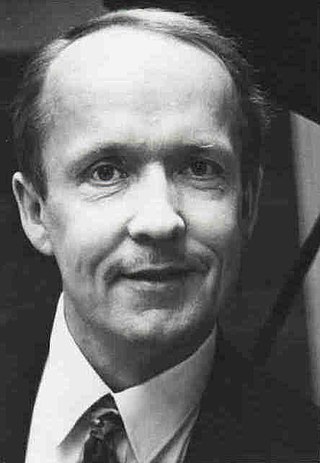
Eero Aarne Pekka Tarasti, is a Finnish musicologist and semiologist, currently serving as Professor Emeritus of Musicology at the University of Helsinki.
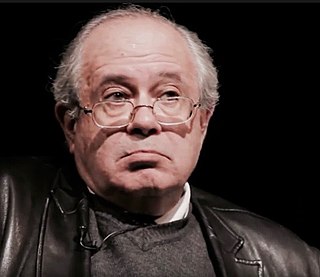
Jacques-Alain Miller is a psychoanalyst and writer. He is one of the founder members of the École de la Cause freudienne and the World Association of Psychoanalysis which he presided from 1992 to 2002. He is the sole editor of the books of The Seminars of Jacques Lacan.
Louis Trolle Hjelmslev was a Danish linguist whose ideas formed the basis of the Copenhagen School of linguistics. Born into an academic family, Hjelmslev studied comparative linguistics in Copenhagen, Prague and Paris. In 1931, he founded the Cercle Linguistique de Copenhague. Together with Hans Jørgen Uldall he developed a structuralist theory of language which he called glossematics, which further developed the semiotic theory of Ferdinand de Saussure. Glossematics as a theory of language is characterized by a high degree of formalism. It is interested in describing the formal and semantic characteristics of language in separation from sociology, psychology or neurobiology, and has a high degree of logical rigour. Hjelmslev regarded linguistics – or glossematics – as a formal science. He was the inventor of formal linguistics. Hjelmslev's theory became widely influential in structural and functional grammar, and in semiotics.
Algirdas Julien Greimas was a Lithuanian literary scientist who wrote most of his body of work in French while living in France. Greimas is known among other things for the Greimas Square. He is, along with Roland Barthes, considered the most prominent of the French semioticians. With his training in structural linguistics, he added to the theory of signification, plastic semiotics, and laid the foundations for the Parisian school of semiotics. Among Greimas's major contributions to semiotics are the concepts of isotopy, the actantial model, the narrative program, and the semiotics of the natural world. He also researched Lithuanian mythology and Proto-Indo-European religion, and was influential in semiotic literary criticism.

Paris Diderot University, also known as Paris 7, was a French university located in Paris, France. It was one of the inheritors of the historic University of Paris, which was split into 13 universities in 1970. Paris Diderot merged with Paris Descartes University in 2019 to form the University of Paris, which was later renamed Paris Cité University.
Versus: Quaderni di studi semiotici is a semiotic journal in Italy. Founded by Umberto Eco, et al. in 1971, it has been an important confrontation space for a large number of scholars of several fields coping with signs and signification. Its foundation and activities have contributed to consolidate the perception of semiotics as an academic field in itself both in Italy and in Europe.

The Sorbonne-Nouvelle University is a public university in Paris, France. It is one of the inheritors of the historic University of Paris, which was completely overhauled and restructured in 1970. Paris III offers courses in a wide range of Arts and Humanities subjects, areas in which – according to the 2018 QS World University Rankings – the university is the 71st best worldwide.
Saint-Louis University, Brussels or UCLouvain Saint-Louis Brussels is a public university in Brussels, belonging to the French Community of Belgium and specialized in social and human sciences.
Jean-Jacques Origas (1937–2003) was a French academic with expertise in Japanese literature and art. He was a Japanologist, best known more for giving his knowledge to his students rather than for publishing books.

Jean-Marie Klinkenberg is a Belgian linguist and semiotician, professor at the State University of Liège, born in Verviers (Belgium) in 1944. Member of the interdisciplinary Groupe µ. President of the International Association for visual Semiotics.
Structural linguistics, or structuralism, in linguistics, denotes schools or theories in which language is conceived as a self-contained, self-regulating semiotic system whose elements are defined by their relationship to other elements within the system. It is derived from the work of Swiss linguist Ferdinand de Saussure and is part of the overall approach of structuralism. Saussure's Course in General Linguistics, published posthumously in 1916, stressed examining language as a dynamic system of interconnected units. Saussure is also known for introducing several basic dimensions of semiotic analysis that are still important today. Two of these are his key methods of syntagmatic and paradigmatic analysis, which define units syntactically and lexically, respectively, according to their contrast with the other units in the system.
Claude Zilberberg, Docteur d'État, was a semiotician, former co-director of the Paris Intersemiotic Seminar.

The semiotic square, also known as the Greimas square, is a tool used in structural analysis of the relationships between semiotic signs through the opposition of concepts, such as feminine-masculine or beautiful-ugly, and of extending the relevant ontology.
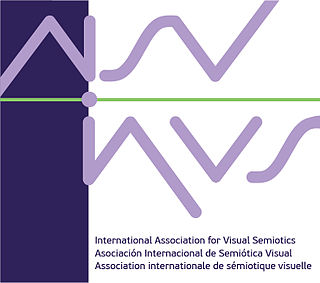
Born from an exchange of ideas between Michel Costantini and Göran Sonesson during the congress of the International Association for Semiotic Studies held in Perpignan, in the south of France, in 1988, the International Association for Visual Semiotics, whose abbreviation is AISV-IAVS, was officially founded as an association under the French law in 1989 in Blois, France, where the first international congress was held in 1990.
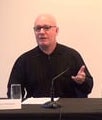
Bertrand Westphal, is a French scholar and essayist.
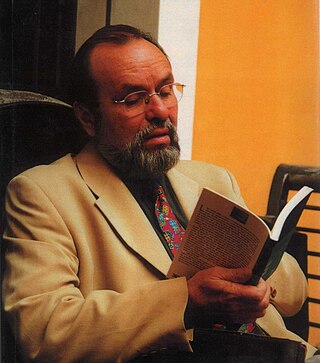
Michel Arrivé was a French novelist, short story writer, linguist and academic. He was a Professor of Linguistics and Semiotics at Paris Nanterre University from 1983 to 2006. He authored several novels and short stories.










